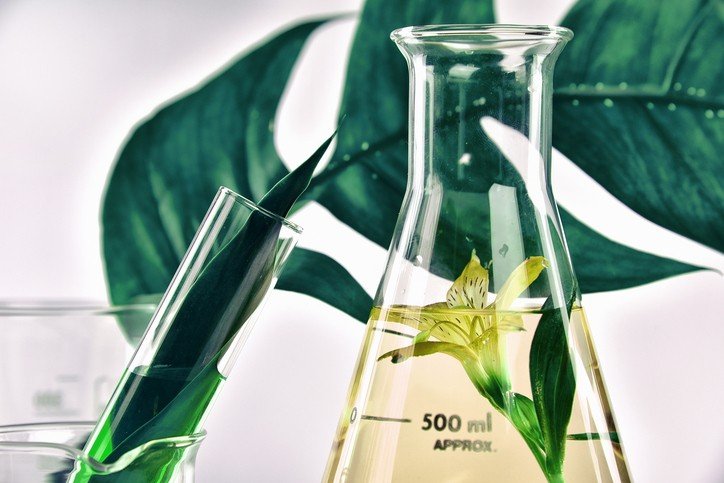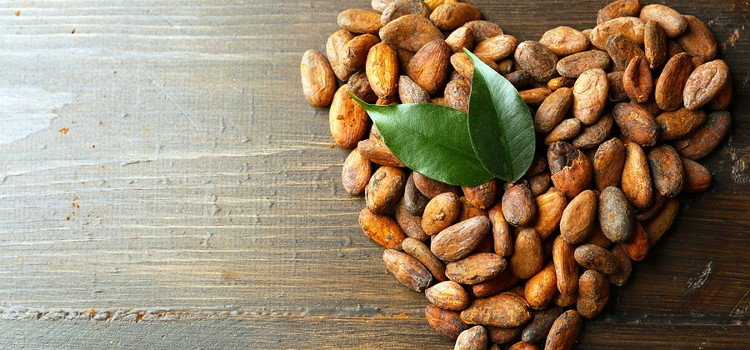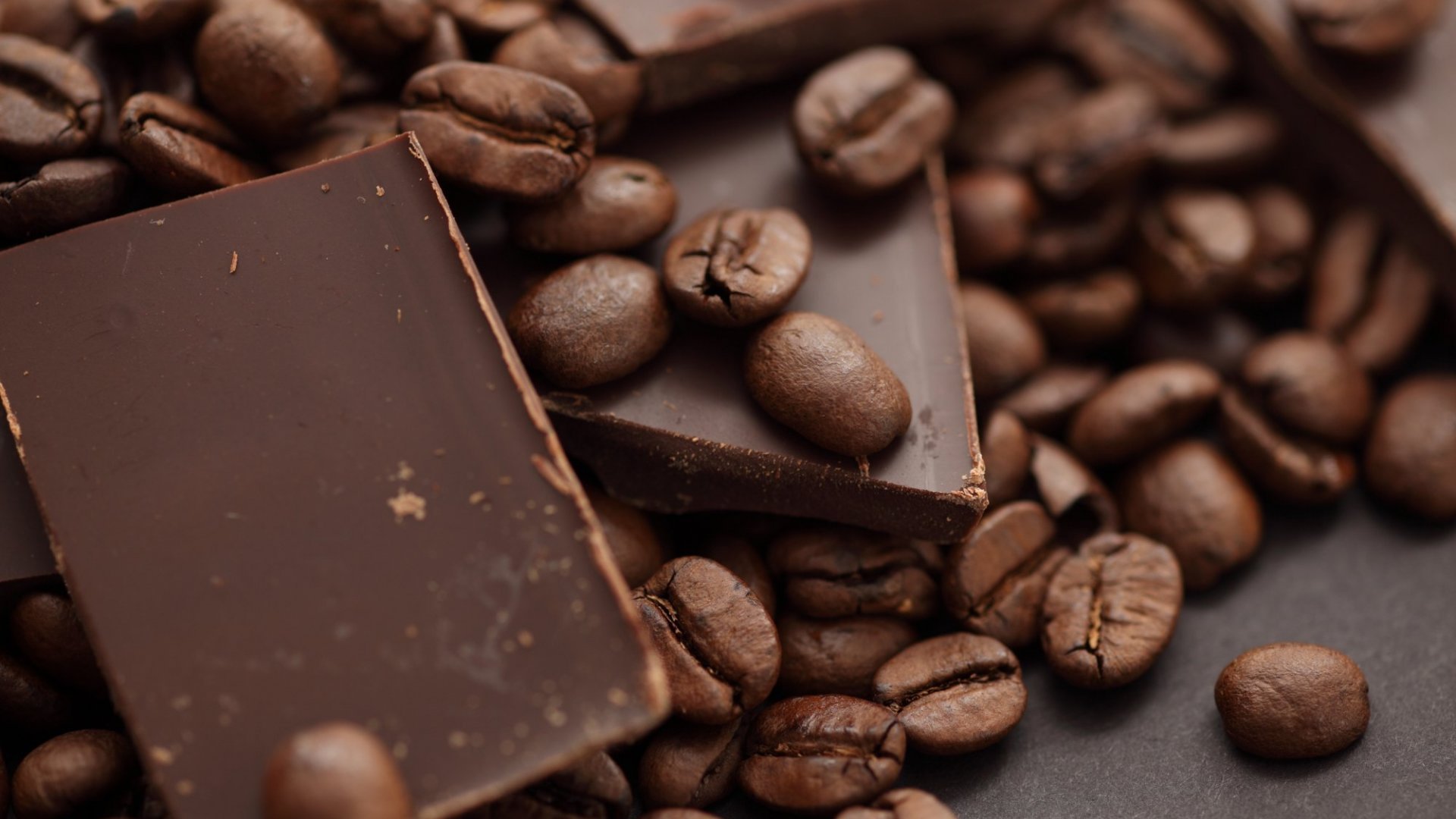
A deep breath. A satisfying sip. A rush of centered energy.
Most people who’ve sipped ceremonial cacao report a substantial lift in both energy and mood. Ceremonial cacao enthusiasts also speak almost unanimously of a profound “heart-opening” sensation upon ingestion. Of course, there are intangibles to this phenomenon, but the physical sensation of “opening up” can be quite potent, so what’s happening here? Is it all in our head (or chest, or arms)?
Turns out, it’s in all of the above!

Theobromine and caffeine in ceremonial Cacao
Ceremonial cacao contains a primary stimulant, theobromine, and a secondary stimulant, caffeine. While theobromine can also be found in trace amounts in green coffee, tea, and yerba mate, the cacao plant is by far its primary source in nature. Theobromine is so prevalent in cacao that its name is adapted from the scientific name for the cacao plant, Theobroma cacao – Theobroma meaning “food of the gods” in Greek. Caffeine, which most are familiar with, is abundant in coffee and tea but present in much lower concentrations in cacao. It is a persistent myth in general society that chocolate is chock full of caffeine, and it is a persistent mistake in the ceremonial cacao community that cacao has only trace amounts of caffeine. Neither is true. The reality is a matter of dose: samples of 100% cacao paste show that cacao contains between 6-10 times as much theobromine as it does caffeine. With such a large theobromine to caffeine ratio, the effects of the relatively small amount of caffeine in cacao are modulated by those of the large dose of theobromine. In a meditation dose of ceremonial cacao from Ecuador (about 28 grams), a person might ingest an amount of caffeine equal to a small cup of green tea (around 30mg), but drink in the theobromine content of more than ten regular chocolate bars! Both theobromine and caffeine are of a class of molecules known as methylxanthines, which also includes theophylline (principally found in tea). Curiously, theobromine and caffeine have very similar chemical structures, but very different effects on the body. Anybody who’s had a little too much coffee in the morning can attest to the resulting jitters and inevitable crash. Ceremonial cacao, however, provides a much more calm, centered, and enduring lift. Why is this? To find out, let’s first learn a little bit about how theobromine works in the body. The heart-opener: theobromine’s action in the body Theobromine differs from caffeine in that it is primarily a smooth-muscle relaxant; it has a greater stimulating effect on the cardiovascular system than it does on the nervous system. It does, however, have some effect within the brain, which we’ll see later. As the theobromine is delivered to the bloodstream, the heart muscle dilates, as does the arterial network around the body and the bronchial passages of the lungs. The result of this vasodilation is an increase in heartbeat and an increase in blood oxygen levels, but a decrease in blood pressure: blood pumping through wider channels yields lower pressure. The high iron content of cacao–at 13.9 mg per 100g, it’s higher than the level found in beef or chicken liver –helps to deliver the increased oxygen molecules all around the body, vastly improving circulation and giving rise to the characteristic “warmth” many feel around their body when sipping pure cacao. As it turns out, ceremonial cacao is quite literally a powerful heart-opener!

How theobromine and caffeine differ in the body
So, theobromine primarily stimulates our cardiovascular system with more minor effects on the brain. “But what about caffeine?” you say.
The action of caffeine and theobromine differ quite significantly in the body. While both molecules are classified as methylxanthines, theobromine lacks a methyl-ring that characterizes caffeine: theobromine has two methyl-rings to caffeine’s three. In fact, theobromine itself presents in the body as a result of caffeine metabolism (once the extra methyl ring is broken off).
Methylxanthines work to stimulate humans by antagonizing adenosine receptors in the neural synapses. That is to say, compounds like caffeine and theobromine attach to adenosine receptors in the brain, thereby blocking adenosine from reaching its synaptic target. In the brain, adenosine works primarily to slow down the brain’s processes: as your day wears on and you become tired, it’s because adenosine is building up in your synapses, among other phenomena. But methylxanthines interrupt all that. The natural slowing of neural activity (sleepiness) promoted by adenosine is blocked, so the brain speeds up its processes with little fatigue–until you crash!
Caffeine is much better at this adenosine blockade than theobromine. With its extra methyl group, caffeine can more easily penetrate the blood-brain barrier to compete with adenosine, and it has a two to three times higher affinity for adenosine receptors than theobromine once inside the brain. So, while theobromine may not bring on the laser-focus one can achieve with caffeine, neither does it overstimulate our circuitry (at proper doses). This is a sufficient explanation for the differing quality of a caffeine “high” vs. a theobromine “high”; i.e., a sharp increase in attention vs. a calm increase in clarity. But what about that crash?
It turns out that the half-life (the time in which it takes to break down half the ingested substance in the body) is significantly longer for theobromine than for caffeine: 2.5-5 hours for caffeine and 7-12 hours for theobromine. In this, we see the energy spike and crash of caffeine-rich coffee vs. the mild and sustained energy boost of theobromine-rich cacao. Taken in the context of the different mechanisms of theobromine and caffeine–the first being a primary cardiac stimulant and the second being a primary nervous system stimulant–we can clearly see the physiological explanation for what we so often feel: the lasting, whole-body energy of cacao vs. the rapid, attentive energy of coffee.

What does this all mean for our Cacao practice?
Is cacao the ultimate coffee replacement, then? Is all caffeine bad?
Well, we like to think cacao is most definitely the ultimate coffee replacement, but we maintain a measured stance.
The truth is that there is a place for both theobromine and caffeine in most people’s lives, and despite the recent indictment of caffeine as something to avoid, there remain quite a few upsides to its habitual use–within the proper doses, that is. Both caffeine and theobromine have been shown to be neuroprotective and cognition-enhancing, and at the ratios present in ceremonial cacao, the benefits are myriad. But, as folk wisdom would have it, the “poison is in the dose”. With the average daily caffeine intake of US adults coming in at nearly six times the amount present in a cup of ceremonial cacao, we can see that we, as a nation, have a dosage problem. Luckily, the switch to ceremonial cacao can unlock all the benefits of daily theobromine use, while also maintaining the neurological benefits of low-dose caffeine ingestion.
What a daily ceremonial cacao ritual does for us on a physical level is a multifaceted study, but the stimulative benefits are clear: a relatively small dose of caffeine works to gently awaken us, and the prolonged action of the theobromine works to avoid any jitters or lull as the caffeine subsides. The vasodilatory effects of the theobromine work to–quite literally–breathe life into our body and, yes, open our heart. It is this gentler stimulation that makes ceremonial cacao a wise choice to replace our morning coffee habit, but also makes it suitable for quiet reflection toward the end of our day.
Want to kick your coffee addiction? Start a Cacao subscription!
Enjoy!
